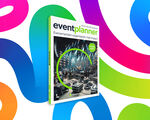You have to have an event website in order to correctly market your event today. Everyone knows that their site must have all the essential information like registration, location, dates, sessions, hotels, etc. And event professionals also know that they need to promote their event in order to gain registrations. But what do you do to make sure that your event website is converting your visitors to attendees?
You need to change the way that you approach your event website in terms of cross-promotion on social platforms, optimizing for mobile and using call-to-actions. All these things will help you with marketing efficiency, reducing no-shows and getting more business.
Your website is surrounded
Nowadays, your website is just a piece of the puzzle. Twitter, blog, YouTube, partners, LinkedIn etc.: these tools/channels weren't there 10 years ago and they completely changed the landscape of how to shape and disseminate content. The website is no longer static with the updates and live info. News goes to the surroundings, with the benefits of accelerating your reach into communities that are already part of this ecosphere.
It's not about wondering if you should be using social media or not. The picture is bigger. Social media for a fact is a part of your ecosphere.
Your website is everywhere
The number of mobile connections to a website is growing exponentially and is about to exceed 'classic' connections. Currently 30% of website reach is made from mobile devices. You have to provide your user with a comprehensive website and a good user experience. To achieve that, the modern world offers 2 solutions; a responsive design, or an adaptive design. What's the difference?
A responsive design is an HTML page with a single code that looks at the size of the screen. If it detects a large screen, you have the classic experience, if you have a small (tablet) or very small (phone) screen, you have a mobile (simpler) view of the content. But it's the same content, the arrangement is just different.
Adaptive is when your classic website has a code that detects if the connection comes from a mobile device. If yes, the user is transferred to another page, mobile friendly: in this mobile page, you can design completely different content and a new look and feel. If you want, it can be completely 'independent' from your website. But it's two templates that you need to maintain (compared to only one page for responsive), but it offers more flexibility. If mobile is important to your audience, it is a better chance to design a great UI (user interface), for a better UX (user experience).
Your website is the final door to access the event
Your website is the final stage of conversion. Make sure you have CTAs (call to action - those links or buttons that lead to your registration form) on every single page: each page of your website can be a landing page from a google search for example.
Want to know more about how to increase your websites effectiveness? Follow us to the etouches blog for the full article: Event Websites: 3 Things that You Need to Change Now.








